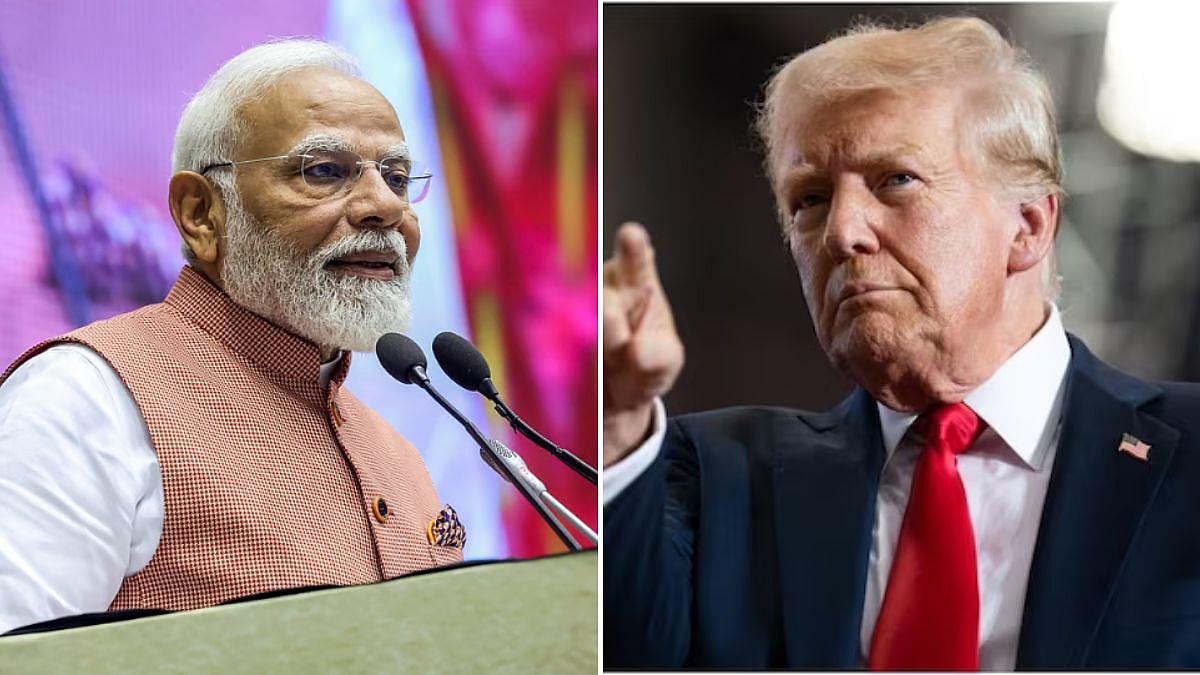New Delhi: The Congress on Saturday latched on to US President Donald Trump third statement on USAID’s now-canceled $21 million funding in India, in which he claimed that the money went to “my friend Prime Minister Modi for voter turnout”, by demanding to know if he indeed took the money and sought a white paper on the issue.
On Thursday too the Congress had sought a white paper on this payment after Trump had said that the funds meant for improving voter turnout in India may have been used “to get somebody else elected”.
About The Case
In his third statement on the issue in three days, Trump said, “USD 21 million going to my friend Prime Minister Modi in India for voter turnout. We are giving $21 million for voter turnout in India, what about us? I want voter turnout too.”
Incidentally, the video was shared on “X” on Saturday morning by BJP’s national information and technology department in-charge Amit Malviya, who, however, removed the PM’s name from a brief transcript that accompanied it. Malviya also wrote alongside: “But what does he know about his own country’s spending?” For the Congress, which was being attacked by BJP for using foreign funds for influencing polls in India ever since the Elon Musk-led Department of Government Efficiency (DOGE) claimed in a post on “X” on February 16 that U.S. agency funding was used for increasing “voter turnout in India”, this provided an opportunity to claim that it was actually the BJP which was to blame.
The party held a press conference in which the chairman of its media and publicity department Pawan Khera while citing Trump’s latest statement asked, “After Trump’s statement, there is silence all around. That is why we want to know from Narendra Modi where did these 21 million dollars go?”
Khera insisted that “Trump’s statement has proved that he had given $21 million to Modi to influence the elections and increase voter turnout.” The party also claimed that “USAID has given $2.9 billion to India between 2001-24. And 44.4% of this amount has come during the Modi government.”
That is why, Khera said, “we are demanding a white paper, because it should be known to everyone as to whom this money went?” Khera also gave a new angle to the issue by saying, “When Anna Hazare’s movement was at its peak during 2012, Kejriwal was forming his own party. At that time Narendra Modi was hatching a conspiracy against Advani. At that time too, how much money came from USAID and to whom did it go – we have to know all this in the white paper?”
He said the party was also demanding that the Centre reveal “which political parties, political individuals, non-governmental political organizations and cultural organizations of India received money from USAID and when did they receive it”.
About The Washington Post’s Report
Meanwhile, The Washington Post on Saturday reported that it found no evidence that $21 million was due to be spent for voter turnout in India or for any other purpose. In a report (How a false DOGE claim ignited a political firestorm in India) it cited “Three people with knowledge of regional aid programs, speaking on the condition of anonymity who expressed bewilderment over the claim.
‘Very Deeply Troubling,’ Says Randhir Jaiswal, Spokesman For The Ministry Of External Affairs
On Friday, Randhir Jaiswal, spokesman for the Ministry of External Affairs, termed the reports “very deeply troubling”, adding that “Relevant departments and agencies are looking into this matter,” he added. The Post said, the $21 million to be spent in India was mentioned as part of a larger $486 million payment to the Consortium for Elections and Political Process Strengthening (CEPPS) — a USAID-funded consortium of nonprofits “dedicated to advancing and supporting democratic practices and institutions” in more than 140 countries since 1995, according to an archived version of its website that was taken down soon after Trump took office.
There is no record of a CEPPS program matching DOGE’s description in India, according to people familiar with the organization’s work. CEPPS did have a $21 million USAID contract — not for India, but for neighboring Bangladesh.
“It seems that they are conflating numbers from other programs,” said a U.S. official with knowledge of the aid programs. “We don’t know anything about elections in India because we have never been involved,” said a person familiar with CEPPS’s work. “We were all shocked to see that claim from DOGE.”
Amit Malviya, the BJP’s head of information and technology, accused India’s previous opposition-led government of “handing over the entire Election Commission of India to foreign operators.” But that, too, was misleading, points out the Post.
IFES was contracted by India’s Election Commission to develop a curriculum on election management, according to a person familiar with the terms of the agreement. “It was really boring work,” the person said. “And ultimately the Election Commission of India approved every single line of the curriculum IFES designed.”
The IFES course material has been used by India not for its own elections, but to train electoral officials from around the world. On its website, the EC boasts of having trained 69,362 election officials from 109 countries. “EC has championed the need for international cooperation among democracies,” the commission’s website reads.
A Post review of public documents shows the 2012 agreement with IFES was updated as recently as August 2020 — at the behest of Indian officials chosen by Modi’s administration. SY Quraishi, who as Chief Election Commissioner, initiated the collaboration with IFES and set up the training institute as India’s chief election commissioner between 2010 and 2012, said in a statement that the accusations circulating in India were “completely false and malicious.” DOGE declined to comment for the Post story. The White House and State Department also did not respond to a request for comment.
